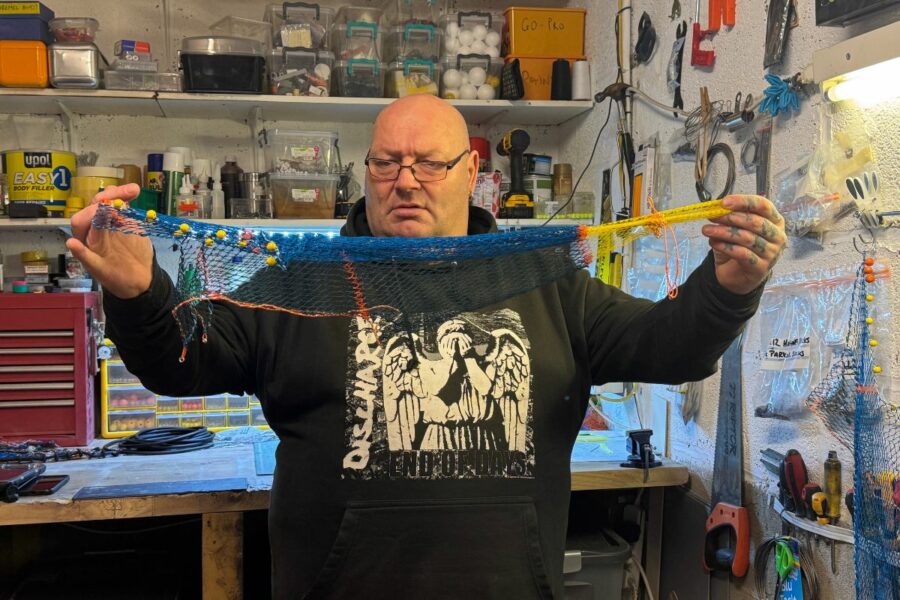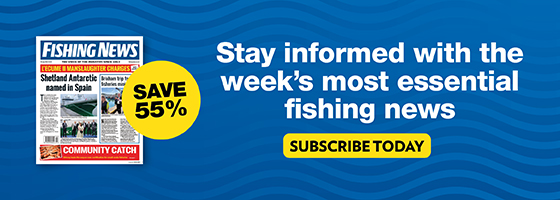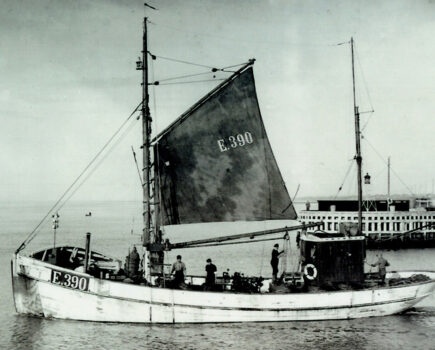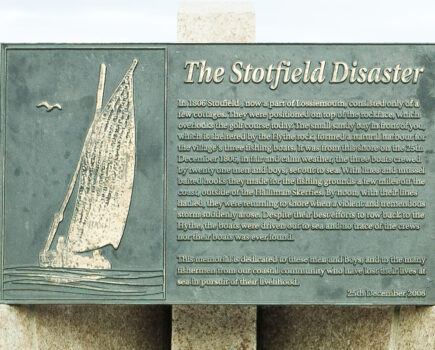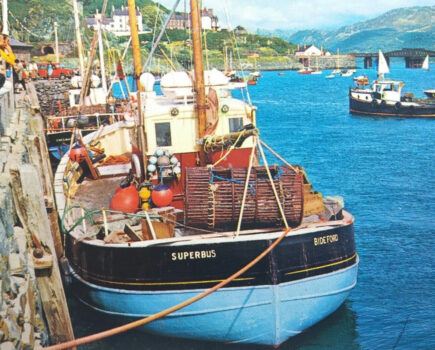I strive for realism all the time,” Neil Newby, who runs Bridlington Model Trawl Netloft, told Fishing News. “I want people to be bamboozled by my nets. I want people to look at them and think: ‘Is that a model trawl net, or a real one?’”
Neil’s self-confessed obsession with net rigging began at sea. “A lot of my family were fishermen. I had a fishing career on a plate when I left school, if I wanted it – which I did. I ended up going to sea with my uncle.”
By the age of 21, Neil was skippering a pair trawler – and it seemed he was destined for a long career in the industry.
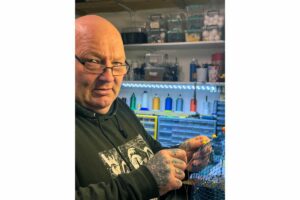
Fifty-seven-year-old Neil Newby runs Bridlington Model Trawl Netloft – rigging fully functional and realistic-looking gear on a miniature scale. “I can make a net to any size needed. Originally, the idea was to make realistic trawl nets to put on model boats. It’s now escalated to people ordering nets more as a functional addition to their model, rather than just a display piece.”
“When I left school in 1983, I was earning more than the teachers who were teaching me. Fishing was a brilliant job. But when the quotas came in, it hit the inshore pretty hard. It was an easy decision to leave the industry – I was earning no money. So in 2003 I came ashore.”
Neil went on to have a successful career in the railway industry – but his passion and skill for rigging trawls never left him.
“I spoke to a friend who builds model boats, and asked him about building a model of the trawler I skippered. He ended up building this trawler, but I thought it looked bare – it needed a net on the deck to make it look a bit more realistic. I hunted around to see if I could find really small, replica netting somewhere.
“I made my own net – and a friend saw it, and wanted a net for his model too. Then someone else wanted one – and it just spiralled from there. Everyone suddenly wanted to make their model look more realistic.
“So I set up a Facebook page (facebook.com/modeltrawlnets). I thought, if word of mouth gets around, it’ll probably progress a bit. Eight or so years on, I’ve now sold nets all over Europe, Canada, New Zealand, Australia – they’ve gone all over the place. It’s escalated beyond belief.”
In addition to making functional trawls for the owners of model boats, Neil also receives commissions for static displays and for research and development purposes – meaning that when it comes to a working on a trawl, good organisation and planning is key.
“My first question I ask someone who enquires is what type of net they want. If it’s for a model boat, I’ll ask the scale of the model and what type of trawl they want – is a seine net, twin-rig, a pair-trawl net…? There are umpteen different types of trawling out there – so I get to grips with what they want. I’ll then ask for photos of their model.”
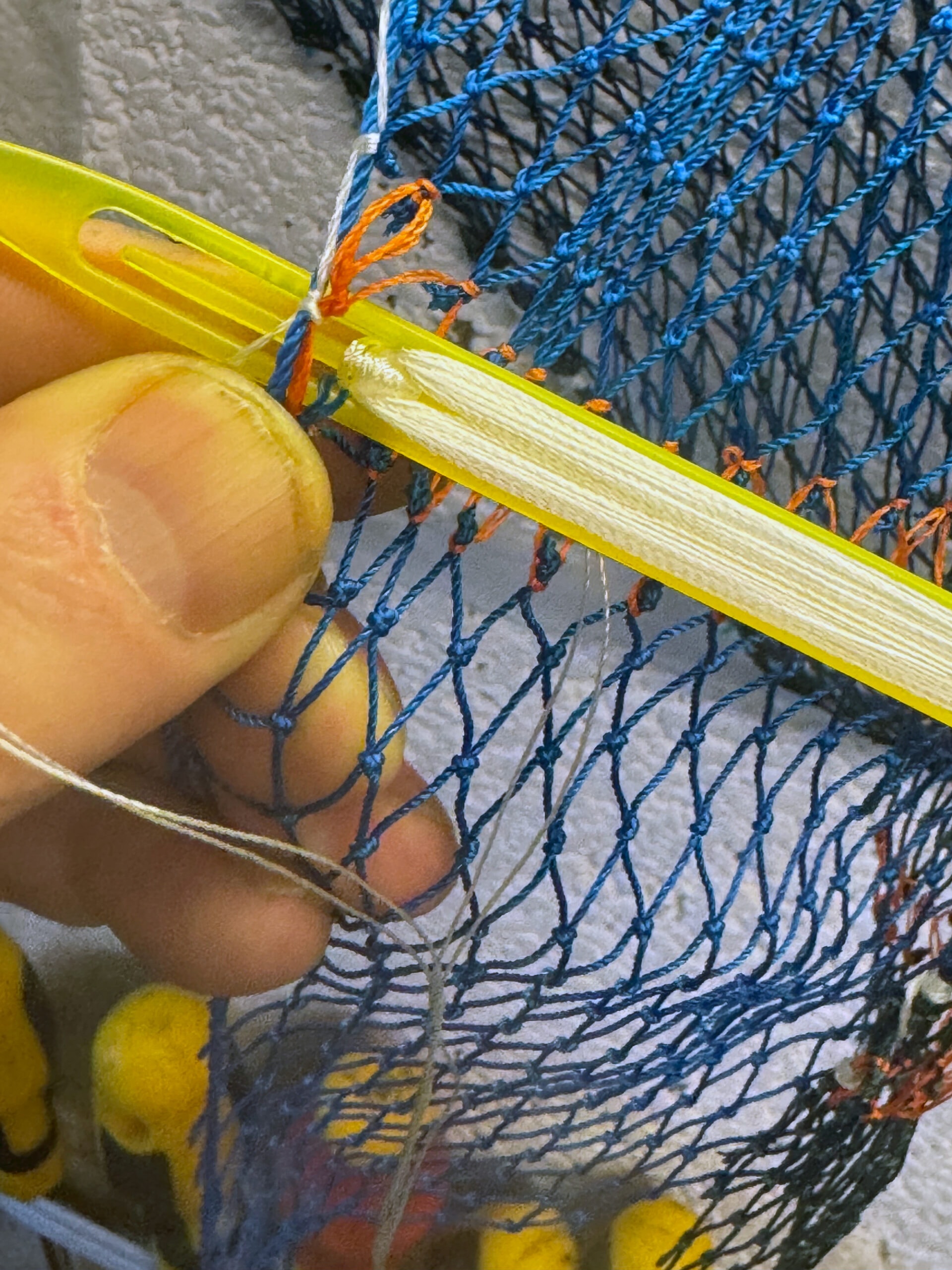
Neil’s impeccable attention to detail is driven by a desire to deliver the most realistic trawl possible – something that hasn’t gone unnoticed. “Out of the hundreds of nets I’ve done, I’ve had nothing but positive feedback. It takes years to build yourself a good name, and minutes to destroy it. The last thing I would want is to upset someone who is paying good money for something – and it isn’t right.”
With the details confirmed, Neil moves on to his materials. “I’ll break down what the customer wants into which materials I need to put that project together. I have a lot of materials already in, like the headline floats on the net – I buy those in bulk, and I buy the netting in bulk from Germany.
“I order white nylon netting because I like to dye it in the colours of real trawl nets. Trawl nets are orange, green, blue… I’ve even seen purple and golden-coloured netting now. I’ll cut the netting into different amounts and place them in buckets of acid milling dye. I’ll then dry them off for a few weeks – and then I’ve got the coloured netting ready to go.”
It’s then a case of putting the trawl together – with the help of Neil’s trusty net plan diary. “I keep a diary of the nets I’ve made, of each particular type and scale. If somebody wanted a prawn trawl at 1:12 scale for a Cygnus model, I know how many floats to put on it so it will open and work properly – because I have a log of everything.
“Sometimes I get asked to make nets that I haven’t made before. I’ll then need to go online, pull some plans out, and scale them down. That can take hours. So once I’ve scaled a trawl net down at a particular size, I make a log of it in my net plan diary. Anything I’ve made once is there for a blueprint for when I want to make it again.”
Neil’s working day also sees him prepare and dispatch completed trawls. “At the end of the process I take a load of photographs of the trawl from every angle possible, and I’ll send them to the customer to make sure they’re happy. Once they are, I post the net to them.”
With a finished net dispatched, Neil updates his social media – which has become an invaluable source of enquiries. “I’ll post the photos I’ve taken of the finished trawl onto my Facebook page.
“People also post pictures of their finished nets on different modelling Facebook groups and tag my page in the post. I enjoy getting feedback from people who have bought nets from me.
“When people post photos and comment and give you a glowing reference, that’s fantastic.”
Neil can be contacted on: 07368 882931 or at: neilnewby02@gmail.com
This story was taken from the latest issue of Fishing News. For more up-to-date and in-depth reports on the UK and Irish commercial fishing sector, subscribe to Fishing News here or buy the latest single issue for just £3.50 here.
Sign up to Fishing News’ FREE e-newsletter here.

